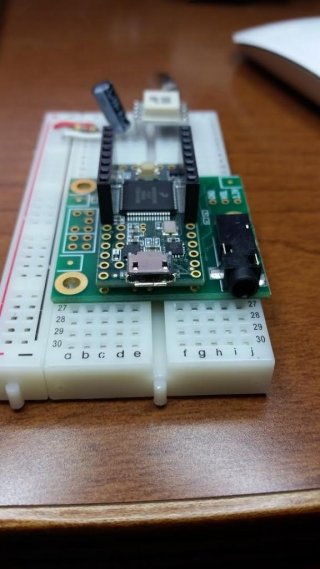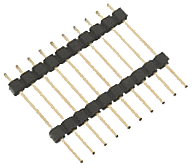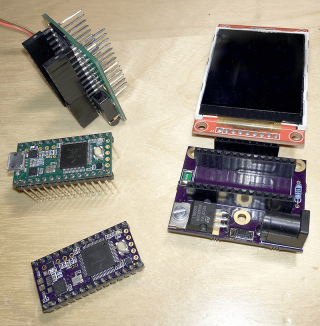Davidelvig
Well-known member
I've soldered a Teensy to an Audio Shield in one prototype, and similar to the photo attached:
- Teensy on top - with a piece of electrical tape sandwiched between that and the Audio Shield
- socket on top, with pins through the bottom sufficient to stick in breadboard
- audio out as stick-up pins from the shield, and mic in as bent pins sticking out sideways under the USB jack.

You can see how it covers the breadboard too thoroughly, so when in use, I have more patch wires than I'd like (rather than low-profile, on-the-breadboard wires.
I also have a couple of other Teensy 3's with pins down only (great for breadboarding with the narrow dimension).
This photographed option works well enough for me, but before I solder my next Teensy plus Audio Shield, I'd like to do a reality check.
What are others doing to make Teensy/Audio assemblies that are solidly bonded, yet flexibly deployed (e.g. on a breadboard?)
(Note in the photo, this is just a thrown together (non-soldered) example. My in-use version has end-to-end sockets, and a few extra audio shield pins soldered as well)
Thanks
Dave
- Teensy on top - with a piece of electrical tape sandwiched between that and the Audio Shield
- socket on top, with pins through the bottom sufficient to stick in breadboard
- audio out as stick-up pins from the shield, and mic in as bent pins sticking out sideways under the USB jack.

You can see how it covers the breadboard too thoroughly, so when in use, I have more patch wires than I'd like (rather than low-profile, on-the-breadboard wires.
I also have a couple of other Teensy 3's with pins down only (great for breadboarding with the narrow dimension).
This photographed option works well enough for me, but before I solder my next Teensy plus Audio Shield, I'd like to do a reality check.
What are others doing to make Teensy/Audio assemblies that are solidly bonded, yet flexibly deployed (e.g. on a breadboard?)
(Note in the photo, this is just a thrown together (non-soldered) example. My in-use version has end-to-end sockets, and a few extra audio shield pins soldered as well)
Thanks
Dave



